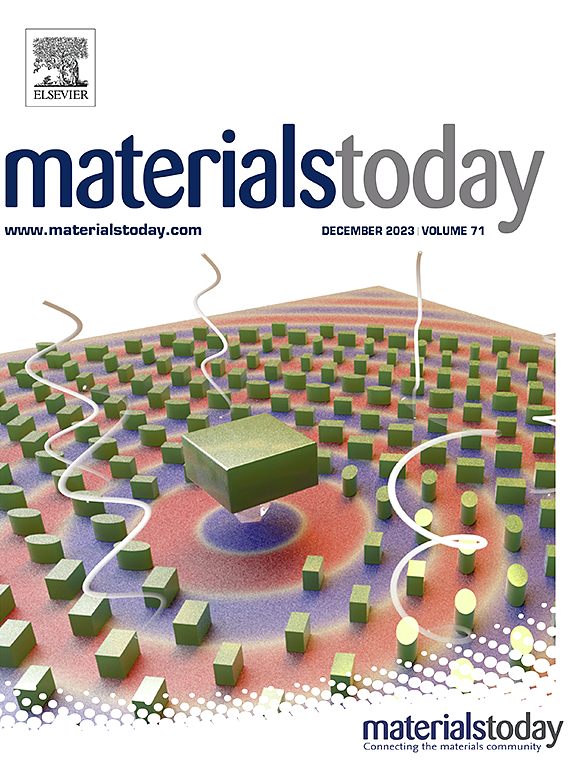Boron sulfide chemical vapor deposition: A new method for the efficient and low-temperature growth of boron nitride nanotubes
IF 21.1
1区 材料科学
Q1 MATERIALS SCIENCE, MULTIDISCIPLINARY
引用次数: 0
Abstract
Boron oxide chemical vapor deposition (BOCVD) is renowned for facilitating the synthesis of boron nitride nanotubes (BNNTs). However, it employs a rather high growth temperature. Herein, we describe boron sulfide chemical vapor deposition (BSCVD), a novel method we have developed for the efficient and low-temperature synthesis of BNNTs. BSCVD is based on the principle of a metal (Me) sulfide and boron (B) reacting to form an Me–B–S system (where S = sulfur). This system has the advantages of a low melting point, high evaporation rate, and increased reactivity with ammonia. Thus, the growth temperature of BNNTs in BSCVD is approximately 100°C lower than that in BOCVD. Additionally, the nucleation time of catalyst droplets in BSCVD is 25 %–40 % of that in BOCVD, while the growth rate of BNNTs in BSCVD is 1.4–1.7 times faster than that in BOCVD. Moreover, the addition of S powder in the Me–B–S system increases the nucleation probability, which in turn reduces the BNNT growth temperature by another 100°C. Meanwhile, the minimum growth temperature of 800°C is relatively low compared to other growth temperatures in the thermal CVD growth domain. In summary, the BSCVD method substantially enhances the low-temperature synthesis of BNNTs and can serve as a new basis for low-melting-point growth systems.

硫化硼化学气相沉积:高效低温生长氮化硼纳米管的新方法
硼氧化物化学气相沉积(BOCVD)以促进氮化硼纳米管(bnnt)的合成而闻名。然而,它的生长温度相当高。在此,我们描述了硫化硼化学气相沉积(BSCVD),这是我们开发的一种高效低温合成bnnt的新方法。BSCVD是基于金属(Me)硫化物和硼(B)反应形成Me - B - S体系(其中S =硫)的原理。该体系具有熔点低、蒸发速度快、与氨反应性强等优点。因此,BSCVD中bnnt的生长温度比BOCVD低约100℃。此外,BSCVD中催化剂液滴的成核时间是BOCVD中的25% ~ 40%,bnnt的生长速度是BOCVD中的1.4 ~ 1.7倍。此外,在Me-B-S体系中加入S粉增加了成核概率,从而使BNNT的生长温度又降低了100℃。同时,800℃的最低生长温度相对于其他生长温度来说是比较低的。综上所述,BSCVD方法大大提高了bnnt的低温合成,可以为低熔点生长体系提供新的基础。
本文章由计算机程序翻译,如有差异,请以英文原文为准。
求助全文
约1分钟内获得全文
求助全文
来源期刊

Materials Today
工程技术-材料科学:综合
CiteScore
36.30
自引率
1.20%
发文量
237
审稿时长
23 days
期刊介绍:
Materials Today is the leading journal in the Materials Today family, focusing on the latest and most impactful work in the materials science community. With a reputation for excellence in news and reviews, the journal has now expanded its coverage to include original research and aims to be at the forefront of the field.
We welcome comprehensive articles, short communications, and review articles from established leaders in the rapidly evolving fields of materials science and related disciplines. We strive to provide authors with rigorous peer review, fast publication, and maximum exposure for their work. While we only accept the most significant manuscripts, our speedy evaluation process ensures that there are no unnecessary publication delays.
 求助内容:
求助内容: 应助结果提醒方式:
应助结果提醒方式:


